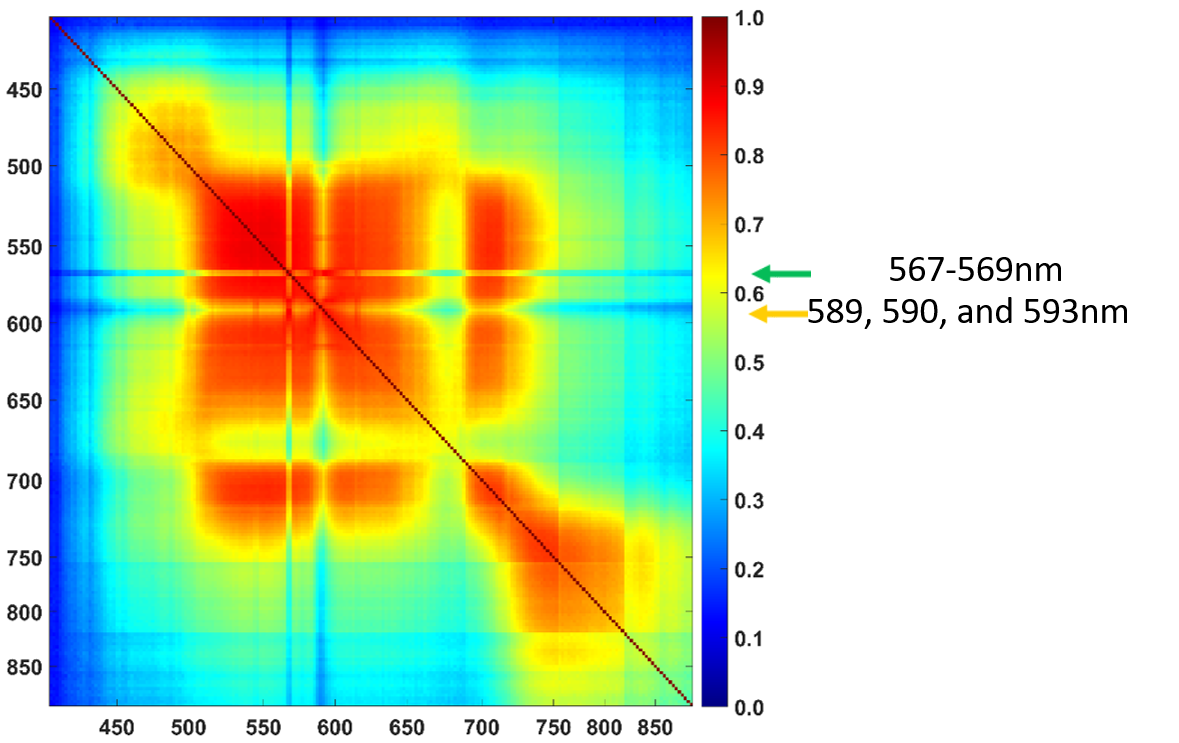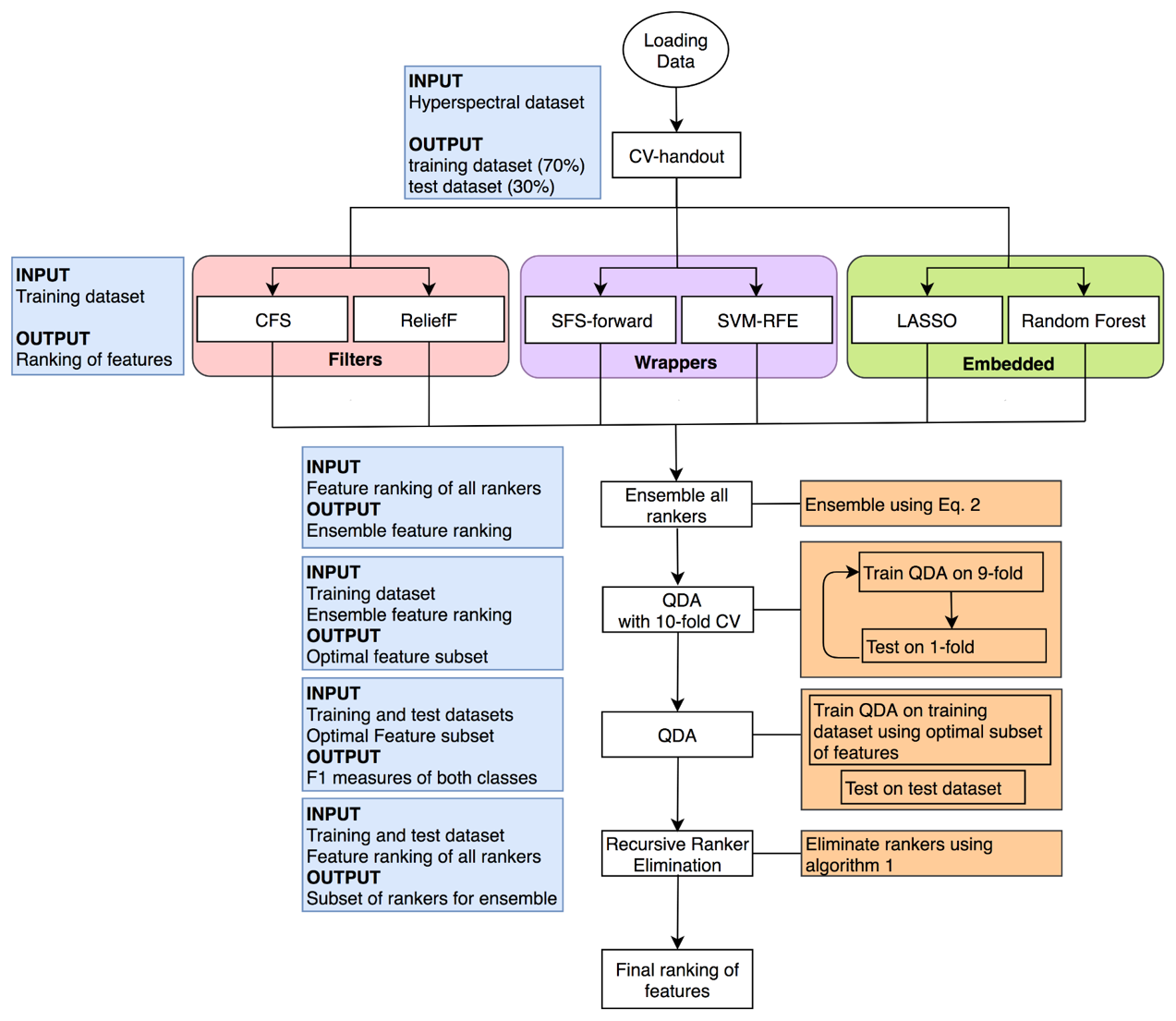Ali Moghimi
19 April 2018
Advisors: Ce Yang and Peter Marchetto
Significance of feature selection
The importance of feature selection can be viewed from two perspectives:
Data Collection
- push-broom hyperspectral camera vs global shutter multispectral camera
- cost of hyperspectral camera
Data Analysis
- complexity and high-dimensionality of hyperspectral data
- irrelevant and/or redundant features (Figure 1)
- risk of overfitting due to large number of redundant features
- computational cost and storage
- required number of samples (pixels) per each class, ‘the curse of dimensionality’
Objectives
- Develop an ensemble feature selection pipeline
- Aggregate the benefits of each feature selection approach
- Identify predominant spectral bands to discriminant pixels representing control and salt treatments.
- Generate broad spectral bands from the selected features to develop a low-cost multispectral sensor for salt stress phenotyping
- Evaluate the feasibility of the broad spectral bands to rank four wheat lines based on their tolerance to the imposed salt stress
Methodology
In this study, we used six feature selection rankers as the base rankers of ensemble pipeline, two rankers from each of the three general subsets of feature selection algorithms: filter, wrapper, and embedded methods. Figure 1 shows the flowchart of the proposed ensemble feature selection.
Results
- Ensemble of all six rankers results in selecting 18 features to have the highest classification accuracy (77.32%).
- Recursive ranker elimination process revealed that the best ensemble is achieved by aggregating only three rankers: ReliefF, SVM-RFE, and Random Forest. This ensemble needed only 15 features to have its highest classification accuracy (77.06%). (Figure 3)
- The top-ranked features obtained by the ensemble of three rankers were clustered to form the centers of six multispectral bands: 528, 805, 589, 573, 751, and 546 nm.
- Four wheat lines could be ranked based on their tolerance to the imposed salt stress by using these six broad bands. The total ranking error obtained by using these six band compared to using all hyperspectral bands was 1.71%, showing how these six bands could capture most of the spectral information.


